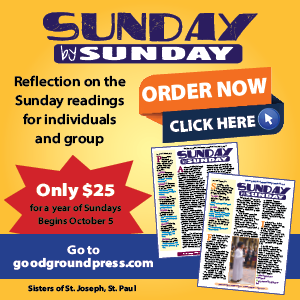In a verdict that was both surprising and refreshing, a Vatican congregation this week overruled the decision of Cleveland Bishop Richard Lennon to close 13 parishes in his diocese, ruling in favor of a group of parishioners who’ve been fighting to keep their parishes open.
The parishioners, who formed a group called Endangered Catholics, had been pursuing an appeal under canon law to challenge Lennon’s closings. A few weeks ago I interviewed Pat Schulte-Singleton, one of the parishioners involved in the canonical appeal, about the efforts of lay Catholics who challenge decisions of the church hierarchy. At the time, more than two years into the appeal process, she was frustrated yet hopeful, awaiting a decision that seemed like it would never arrive.
Perhaps most frustrating was the fact that her parish, St. Patrick in Cleveland's West Park neighborhood, remained empty as the appeal dragged on. The bishop had closed the parish and parishioners were instructed to register elsewhere even though a canonical appeal was still pending. The same scenario has played out in parishes around the country.
“Our parish, like many parishes, was closed, doors shut, during this appeal process, which we don’t believe is right,” Schulte-Singleton told me at the time. “It is not very fair. It seems the church just does what it wants, and you have to fight to regain, which doesn’t make a whole lot of sense to many laypeople.”
Now that the parishioners in Cleveland have won that fight, I spoke with Schulte-Singleton again to ask her about the process of reopening a parish that has been dormant for more than two years. “It is not going to be an easy thing to do,” she says. For one, it will be up to the bishop to decide how the process will work for not just St. Patrick, but all 13 parishes that have to reopen. It will also require restaffing the parishes, reassigning priests, and preparing the physical churches to once again serve as worship sites.
At St. Patrick Schulte-Singleton says the first priority is getting the doors open and getting people back into the church. Parishioners have stayed in touch during the long process and Schulte-Singleton says she’s already heard from many who have offered to lend a hand to get the parish up and running again. While some have moved on and joined other parishes, she estimates that 75-80 percent are still committed to St. Patrick and are ready to come back. She’s also hopeful that their longtime pastor, who retired for health reasons when the parish closed, would be able to return to celebrate Mass.
“I don’t think it will take long for our parish to get on the right track again,” Schulte-Singleton says confidently. And even though she thinks that things would have been better for all involved if the parishes had been able to continue functioning during the appeal, she’s not dwelling on the past and has even offered to help the bishop with the reopening of the parish.
“I’m trying to put a positive spin on the whole process,” she says. She’s hopeful that old ministries will be rekindled, new ones will be formed, and people will return with a renewed sense of commitment to their faith community. “It has given us a little shot of energy and vibrancy. We’re new and improved in a sense.”








